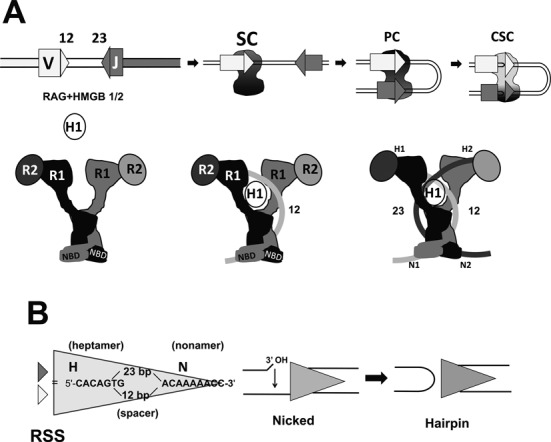Figure 1.

Features of RAG-mediated DNA cleavage during V(D)J recombination. (A) The steps involved in RAG-mediated DNA cleavage are represented schematically (upper panel), indicating V and J gene segments (rectangles), the 12RSS and 23RSS (light and dark gray triangles, respectively) and the RAG1/RAG2/HMGB1 complex (black/dark gray shape). SC: signal complex; PC: paired complex; CSC: cleaved signal complex. The lower panel presents a cartoon representation of the RAG heterotetramer (left), the RAG heterotetramer after binding the 12RSS (curved light gray line) and incorporating HMGB1 (white oval) (12SC; middle) and after incorporation of the 23RSS (curved darkest gray line) (PC; right). This depiction of the RAG heterotetramer and its DNA complexes derives from the shape of the signal end complex described by Grundy et al. (30) and incorporates strong bending of the 12RSS (this paper) and the 23RSS (26), with black and dark gray used to indicate the RAG subunits engaged in cleavage of the 12RSS and 23RSS, respectively. (B) The RSS and the mechanism of RAG-mediated DNA cleavage. The sequences of the consensus heptamer and nonamer elements and the structures of the nicked intermediate (with 3′ hydroxyl (3′ OH) group) and the products of double strand break formation, including the hairpin coding end, are shown.
